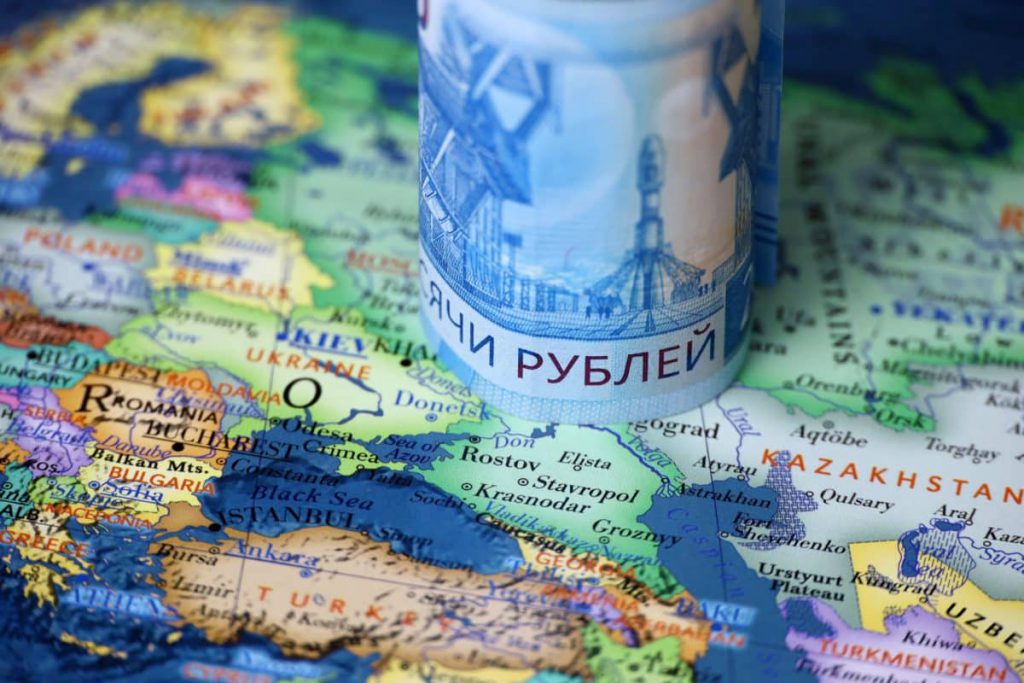
The Russian Ruble’s Decline: A Comprehensive Analysis
The Russian Ruble (RUB) has been under immense pressure lately, characterized by a steady fall against the US dollar (USD). In a month, we have seen the USDRUB exchange rate move from 88.10 on July 3rd to now over 92.7. This marked a significant decline in the value of the Ruble. Several factors have contributed to this development, with geopolitical risk, macroeconomic indicators, and the advent of the digital Ruble as key drivers.
Geopolitical Risks and Sanctions
One of the dominant factors affecting the value of the Ruble is the high level of geopolitical risk. According to our analysis, escalating geopolitical tensions have contributed significantly to the drop in the Ruble’s value. As Russia faces sanctions and embargoes from several international parties, businesses and investors have become increasingly apprehensive about the country’s economic prospects.
The threat of further sanctions not only destabilizes the current economic conditions but also deters foreign direct investment (FDI). The uncertainty associated with geopolitical risks means that the Ruble may continue to decline as investors retreat, leading to capital flight. This reduction in FDI also exacerbates inflationary pressures in Russia, further deteriorating the Ruble’s value.
War, Macroeconomic Conditions and Oil Prices
After invading Ukraine, strict economic sanctions were imposed on Russia; the isolation of the Russian state and its economy had a negative impact on the Russian Ruble; however, it is not the only factor affecting the exchange rate.
The Russian economy is heavily dependent on oil exports. Therefore, fluctuations in global oil prices can directly impact the value of the Ruble. The recent downturn in oil prices has adversely affected the Russian economy and, by extension, the Ruble. Although the analysis suggests a recovery in the Ruble’s value with a bullish pattern forming, the fundamental macroeconomic conditions present a different scenario. Unless there’s a significant recovery in oil prices, the pressure on the Ruble is likely to persist.
In addition, the Ruble is under pressure due to Russia’s increasing inflation rate and slowing economic growth. The Central Bank of Russia has attempted to stem the tide by raising interest rates, but these efforts have been met with limited success. The Ruble faces intensified downward pressure due to these challenges. If there are no substantial improvements in these indicators, its decline could persist.
Digital Ruble and Financial Evasion
The advent of the digital Ruble was widely considered a strategic move by the Russian government to evade financial sanctions and stabilize the economy. However, as per a report from The Moscow Times, the digital Ruble is not likely to aid in evading sanctions anytime soon. The effectiveness of the digital Ruble is contingent on its global acceptance, which is currently limited. In the short-term, it does not offer any respite for the ailing Ruble.
The Russian Ruble’s Decline: Conclusion
Considering the above factors, the Ruble’s outlook remains bleak, particularly against the US dollar. Geopolitical risks continue to loom large. Hence, until there is a resolution to these issues, they will continue to exert pressure on the Ruble. Macroeconomic conditions, including the country’s dependency on oil prices and a slowing economy, add to the currency’s woes.
While the digital Ruble represents an innovative approach to navigating the current challenges, its effectiveness remains to be seen. In the short-term, it provides little to no support for the Ruble’s value. Therefore, given these circumstances, it appears likely that the Ruble will continue to fall against major currencies unless there is a significant change in these underlying factors. Moreover, our 3-week-old prediction on the decline of the Ruble seems to be more than realistic.



